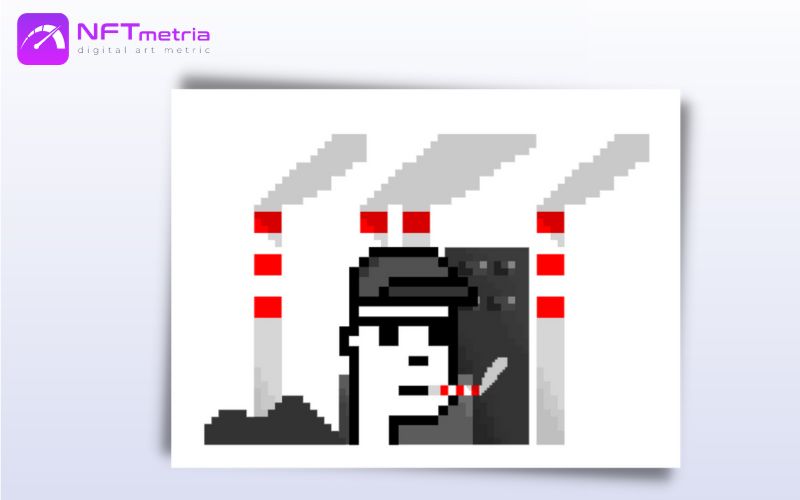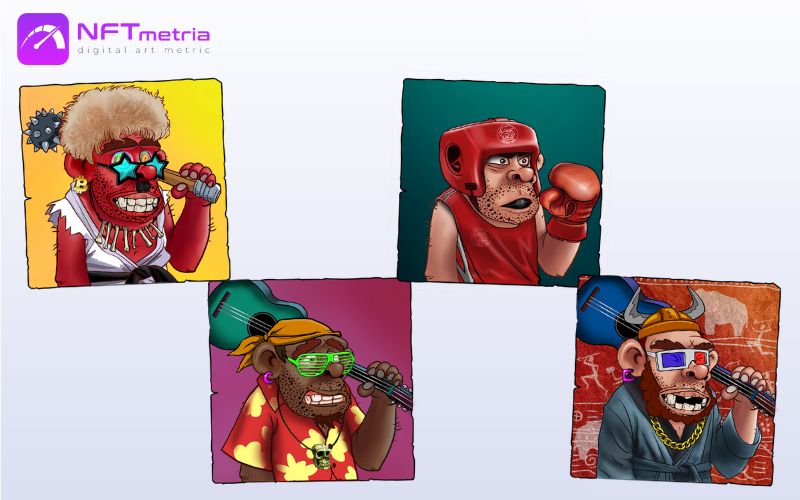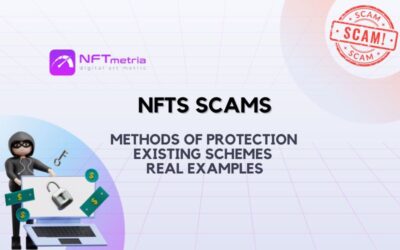In the booming world of NFTs, exciting opportunities coexist with potential risks. As the market expands, so do scams and frauds, leaving investors vulnerable. Understanding the landscape of NFT fraud is crucial to safeguarding your digital assets.
How NFT Scams Affect the NFT Space?
The ways NFT scams affect the NFT space, highlighting the multifaceted consequences that reach far beyond individual transactions. From eroding trust to regulatory implications, these scams have a profound impact on the NFT market’s credibility and the community’s overall confidence. Let’s explore how these fraudulent activities influence the vibrant world of NFTs.
- Trust Erosion: NFT scams erode trust within the NFT community. As instances of fraud increase, potential buyers become more hesitant, impacting legitimate artists and sellers who struggle to find genuine buyers.
- Market Volatility: Scams contribute to market volatility. Large-scale scams, such as rug-pulls or pump and dump schemes, cause sudden price fluctuations, creating uncertainty and deterring long-term investors.
- Regulatory Scrutiny: Rampant scams invite regulatory scrutiny. Authorities step in to protect consumers, potentially introducing stricter regulations, which can impact the ease of trading and the overall growth of the NFT market.
- Dilution of Value: Counterfeit NFTs flood the market, diluting the value of genuine assets. Buyers might become disillusioned with the market, affecting the perceived worth of authentic NFTs.
- Innovation Hindrance: Scams divert resources and attention away from genuine innovation. Instead of focusing on developing groundbreaking projects, the community and developers spend time combating scams and addressing their aftermath.
- Community Discord: Scams cause discord within the NFT community. Members may accuse each other, leading to conflicts and divisions that hinder collective efforts to create a positive and thriving ecosystem.
- Reduced Investor Confidence: Continuous scams reduce investor confidence. Investors, both individual and institutional, may shy away from NFTs, affecting funding opportunities for legitimate projects and hindering market growth
Existing schemes of NFT scams
In the exciting yet treacherous realm of NFTs, awareness is your shield against scams. Here’s a strategic breakdown of common NFT frauds and how to protect yourself:
- Unverified Platforms and Marketplaces: Beware of poorly regulated platforms selling non-existent or fake NFTs. Prioritize platforms with robust security measures, positive user reviews, and stringent KYC protocols.
- Fake Artwork and Counterfeit NFTs: Scammers create replicas or entirely new art pieces, tricking buyers into paying for worthless or stolen work. Always authenticate by researching artists and using reputable platforms.
- Bidding Scams: Fraudsters alter bid currencies after enticing sellers, leading to unsuspecting transactions. Verify the cryptocurrency used and use trusted platforms for safer transactions.
- Rug-Pull Scams: Deceptive developers hype an NFT project, collect funds, and disappear. Conduct extensive research on project teams and social media presence to identify potential rug-pulls. Next, we will use examples to analyze this large-scale method of deception.
- Front Running and Insider Trading: Be wary of sudden price hikes before announcements, indicating potential front-running or insider trading. Trust reputable platforms with stringent policies against these practices.
- Ponzi and Pyramid Schemes: Fraudsters promise high returns, recruiting new participants until the scheme collapses. Exercise skepticism and research extensively to avoid falling victim to enticing yet dubious schemes.
- Customer Support NFT Scams: Impersonators pose as marketplace staff, extracting sensitive data and stealing NFTs. Verify the authenticity of offers and never share credentials online to safeguard your assets.
- NFT Airdrop Scams: Scammers distribute fake giveaways, tricking users into sharing sensitive data. Be cautious of unsolicited offers and never disclose private information online.
- Phishing and Impersonation Scams: Fake websites and profiles lure users, leading to theft of private keys and assets. Double-check URLs, avoid unsolicited requests, and use secure wallets to thwart these attempts.
- Pump and Dump NFT Schemes: Scammers inflate NFT prices, create hype, and sell, causing massive losses. Thorough research, skepticism, and understanding an asset’s true value are your best defenses.
Stay vigilant, conduct due diligence, and remember, in the world of NFTs, knowledge is your strongest armor against scams.
How to Avoid NFT Frauds: Practical Tips
Having comprehended the prevalent scams in the NFT domain, let’s now explore a set of safety protocols crucial for participants in this ecosystem.
- Do Your Own Research (DYOR)
- Research the platform: Check the platform’s reputation and transaction history. Read reviews and assess the creators’ involvement level in the project.
- Avoid anonymous teams: It’s preferable to avoid projects with anonymous or pseudonymous creators to mitigate the risk of fraud.
- Be Cautious with Social Media
- Check activity: Social media engagement can indicate a project’s legitimacy. Avoid projects relying solely on influencer marketing.
- Use Separate Wallets for Minting
- Separate wallet: Use a distinct wallet for minting new projects to minimize risks. Transfer NFTs to your main wallet after successful minting.
- Verify from Official Sources
- Check the website: Always verify the website’s URL before connecting your wallet. Avoid clicking on suspicious links.
- Utilize Hardware Wallets
- Asset protection: Use hardware wallets to safeguard your crypto assets. They prevent unauthorized access and protect your NFTs from being moved without consent.
- Never Share Private Keys or Recovery Phrases
- Private keys: Never share your private keys or recovery phrases. Legitimate sources will never ask for this information.
- Be Wary of Suspicious Links
- Link caution: Avoid clicking on suspicious links to prevent viruses or phishing attacks.
- Disable Discord Direct Messages
- Discord security: Turn off direct messages from strangers in Discord to prevent phishing attempts and scams.
- Doubt Unbelievable Offers
- Verify information: Always be skeptical and verify information, especially if it sounds too good to be true.
By following these recommendations and staying vigilant, you can minimize the risks of fraud in the NFT space and safely participate in it.
The most famous cases of NFT scams
No theory teaches the market as well as living examples, which have already become part of the history of the formation of the NFT market. So, here are the most famous cases of NFT scams:
Iconics Scam: $140,000 Loss
Iconics, a seemingly promising NFT collection crafted by a 17-year-old designer on the Solana blockchain, turned out to be a scam. The young creator offered 8,000 unique 3D images and initiated pre-sales for 2,000 pieces at 0.5 SOL each.
In the Iconics project, the creator sent investors a collection of emojis in the form of NFTs, not works of art
Eager investors participated, only to find out that instead of the promised exclusive artwork, they received a collection of random emojis in their wallets. The creator vanished, shutting down Twitter and Discord channels, leaving investors with substantial losses and shattered trust.
Frosties NFT Scam – $1.3 Million Loss
In 2022, Frosties became the first NFT rug pull of the year, resulting in a loss of $1.3 million for investors. The project, offering staking functions and access to the Metaverse, sold 8,888 “ice cream” NFTs.

However, after the sale, all social media, Discord channels, and the website disappeared, and the development team vanished. Investors were left empty-handed, with no way to retrieve their investments.
Baller Ape Club Scam – $2 Million Loss
Baller Ape Club, a project featuring 5,000 NFTs priced at 2 SOLs each, capitalized on its name and similarity to the popular Bored Ape Yacht Club. Investors trusted the project, only to be deceived. After the public release, the creators abruptly deleted all online presence and accounts, absconding with the investors’ money. The assets, valued at $2 million during the sale, were lost, leaving investors with significant financial setbacks.
Fake Banksy NFT Scam – $336,000 Lost and Recovered
A scam involving a counterfeit Banksy NFT auction occurred, resulting in an investor losing $336,000. Pranksy, a renowned NFT collector, bid on an NFT titled “Great Redistribution of the Climate Change Disaster” on Banksy’s website, based on a Discord link.

After the bid, the NFT auction vanished. Fortunately, Pranksy later confirmed the money was returned to his wallet. Nevertheless, the incident highlighted the vulnerability of NFT investors to sophisticated scams.
Evolved Apes Scam – $2.7 Million Loss
In October 2021, ‘Evolved Apes’ launched, offering 10,000 unique apes for a vaporware fighting game.

Investors were promised cryptocurrency rewards. The developer, known as ‘Evil Ape,’ raised 798 ETH (approximately $2.7 million) through the initial offering. However, once the funds were secured, the developer vanished, leaving investors with worthless digital assets and substantial financial losses.
By the way, this is also a remarkable case: in November 2022, the project was reorganized into Fight Back Apes with the support of major brands Daz 3D, Atari and Ledger. It is now a full-fledged functioning project and the first case of revival after such a massive scam.
Fractal Marketplace Scam – $150,000 Loss
Fractal, a game item NFT marketplace, fell victim to a fraudulent NFT giveaway in 2021. Scammers orchestrated a giveaway, enticing users to click a link through the project’s official Discord channel. However, the link was a scam designed to steal cryptocurrency. Users who connected their wallets found their funds transferred to the scammer’s account, resulting in a collective loss of over $150,000.
In December 2021, Twitch co-founder Justin Kan had one of Fractal’s bots hacked in his NFT-focused Discord channel. As a result, a fake link was posted in the server’s “#announcements” channel. Hundreds of server members sent $150,000 worth of Solana cryptocurrency to the hacker’s wallet.
A few more famous cases of NFT scams
- In February 2022, 1.7 million worth of NFTs were stolen from the most popular trading platform OpenSea.
- In March 2022, the famous NFT game Axie Infinity had its Ronin sidechain hacked, resulting in the theft of $620 million from users’ accounts.
- In January 2023, influencer and entrepreneur Kevin Rose lost his personal NFT collection worth over $1.1 million dollars in a phishing scam.
Conclusion
While NFTs offer incredible potential, the ecosystem demands vigilance. Educate yourself, exercise due diligence, and prioritize security. By staying informed and vigilant, you can enjoy the benefits of NFT investments while protecting your digital assets from scams and frauds. And when searching for an NFT project for investment purposes, follow our guide to competently searching for an NFT project with investment potential.











